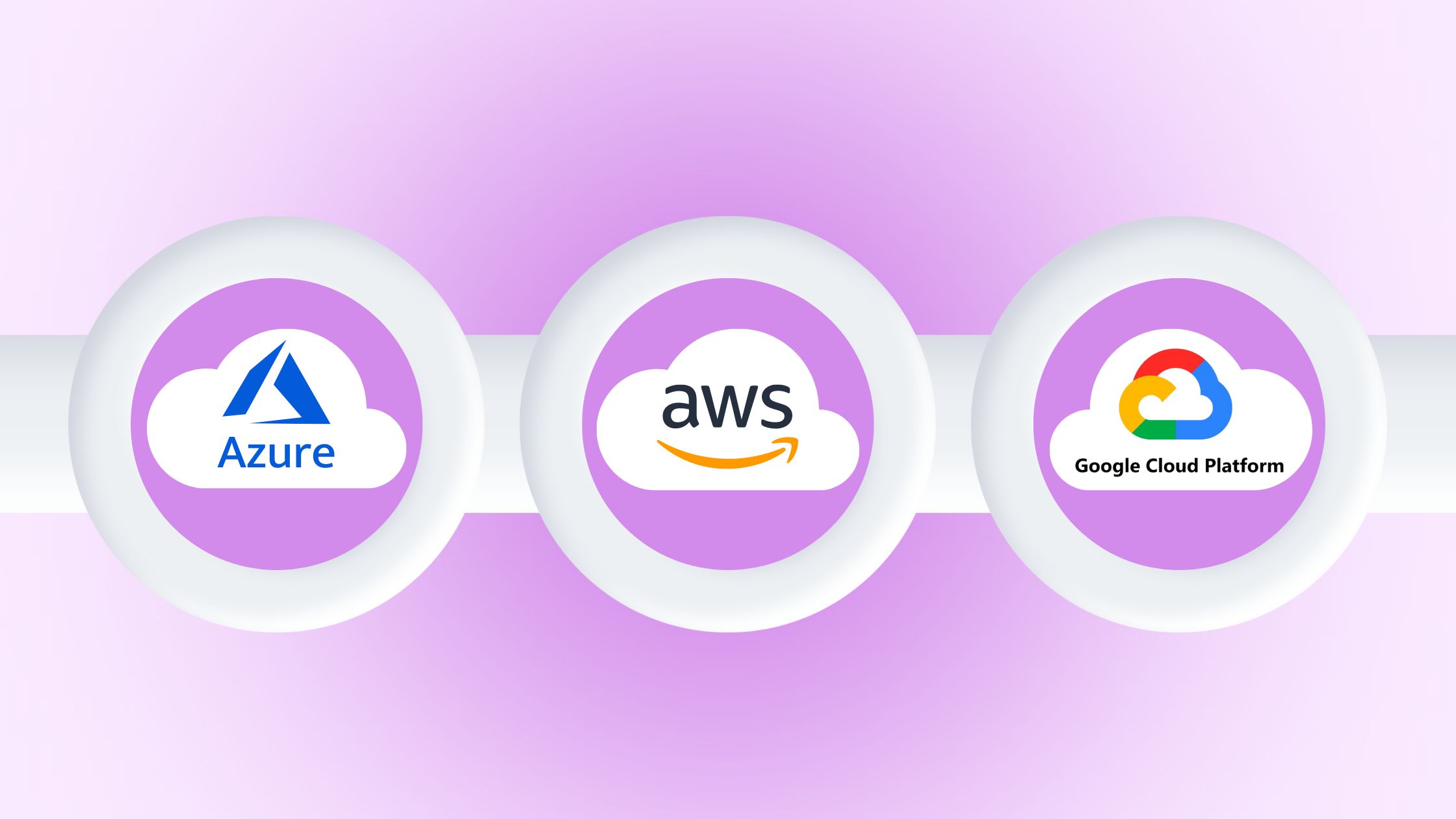Comments (2)
Tailored Snowflake Alerts: How to Boost Business Efficiency Using Cloud Data Analytics

Introduction
Snowflake, a cloud data storage & analytics platform, acts as the foundation for modern data analytics. Think of Snowflake as a supercharged library where businesses can store and analyse vast amounts of data. It’s like having a digital warehouse that can hold every piece of information, from customer behaviour to market trends, in one accessible place.
Snowflake provides a secure and scalable environment that allows businesses to store and process massive amounts of information, helping them uncover valuable insights and make informed decisions. What sets Snowflake apart is its ability to operate seamlessly on various cloud platforms like AWS, Azure and GCP.
In this blog, we will explore how organisations gain the power to tailor their data analytics infrastructure, resulting in more efficient operations and better business outcomes with the help of Snowflake.
Understanding Snowflake Alerts
Snowflake alerts play a crucial role in monitoring data and ensuring businesses stay on top of critical events and changes in their system. These alerts act as notifications for specific conditions, enabling businesses to proactively address potential issues or seize opportunities. By customising these alerts to suit specific business needs, organisations can maximise the benefits they derive from Snowflake.
When it comes to monitoring data, Snowflake alerts act as a watchful eye, constantly scanning for predefined triggers. These triggers could be anything from detecting unusual spikes in data traffic to identifying system performance bottlenecks. When a trigger event occurs, Snowflake alerts promptly notify responsible individuals or teams, allowing them to take immediate action, thus preventing any potential data integrity or operational disruptions.
The advantages of customising Snowflake alerts are multifold. Custom alerts can be tailored to focus on specific business metrics, enabling organisations to closely monitor their key performance indicators or track market trends.

Customising Snowflake Alerts for Your Business
- A. Choosing the Right Alert Triggers
In customising Snowflake alerts for your business, choosing the right alert triggers is crucial to ensure you receive timely and relevant notifications. Snowflake offers a range of alert triggers to cater to different monitoring scenarios.
1. Snowflake provides triggers based on system-level events, such as query executions, database modifications, or changes in resource utilisation. These triggers allow businesses to stay informed about any significant system activities that may impact performance or data integrity.
2. Snowflake supports data-level triggers, enabling businesses to monitor specific data attributes or changes within their datasets. This allows for fine-grained control over data quality, ensuring accurate and up-to-date information.
3. When selecting alert triggers, it’s essential to align them with your business requirements. Consider the critical aspects of your operations and the potential risks or opportunities associated with them. For example, if you operate a retail business, you may want to set up triggers for inventory levels, demand fluctuations, or customer feedback.
- B. Defining Alert Severity Levels
When customising Snowflake alerts for your business, it’s important to define alert severity levels to prioritise and respond to events appropriately. Alert severity levels help classify the urgency and impact of different events, ensuring that the right actions are taken based on their significance. There are typically four common alert severity levels:
1. Informational: These alerts convey non-critical events or provide general information. They do not require immediate action but can be helpful for monitoring purposes or providing contextual insights.
2. Warning: Warning alerts indicate potential issues or abnormal conditions that may require attention. While they might not cause immediate harm, they warrant investigation or proactive measures to prevent escalation.
3. Error: Error alerts signify significant issues that can impact functionality, performance, or data integrity. Immediate action is required to address these alerts and mitigate the underlying problems.
4. Critical: Critical alerts represent severe incidents with potentially severe consequences. They demand immediate attention and necessitate rapid intervention to avoid major disruptions, data loss, or security breaches.
To set up appropriate severity levels for different scenarios:
1. Consider the potential impact on your business operations, data integrity, and customer experience.
2. Assess the urgency and potential repercussions of each event type to determine the appropriate severity level.
3. It’s essential to align severity levels with your business priorities and incident response processes.
4. Establish clear guidelines for how different severity levels should be addressed.
5. Define escalation paths, assign responsible individuals or teams, and establish response timeframes accordingly. This ensures that alerts are appropriately triaged, investigated, and resolved based on their severity.
- C. Configuring Alert Delivery Channels
When customising Snowflake alerts for your business, it’s important to configure the appropriate alert delivery channels to ensure that alerts reach the right stakeholders in a timely manner. Snowflake provides various options for receiving alerts, allowing you to choose the most suitable channels for your organisation’s needs. Snowflake supports the following alert delivery channels:
1. Email: Alerts can be sent directly to designated email addresses, ensuring that relevant stakeholders receive notifications in their inboxes.
2. SMS: Snowflake can deliver alerts via Short Message Service (SMS), enabling real-time notifications to be sent directly to mobile devices.
3. Webhook: With webhooks, Snowflake can send alerts to specific URLs, allowing integration with external systems or custom applications for further processing or automated actions.
4. Integration with extended services: Snowflake seamlessly integrates with popular tools and platforms, such as Databricks and AWS, allowing you to leverage their capabilities for alerting and monitoring workflows. This integration streamlines the delivery of alerts through existing infrastructure and tools that your business may already be using.

- D. Creating Customised Alert Messages
Creating customised alert messages is crucial for effective communication and prompt action when dealing with Snowflake alerts. Clear and actionable alert messages ensure that the recipients understand the nature of the event and can take appropriate steps without confusion or delay. The importance of clear alert messages lies in their ability to provide essential information concisely.
Consider the following tips for crafting customised alert messages for effective communication:
1. Be specific: Clearly state the nature and impact of the alert event. Specify the affected component, system, or dataset to provide recipients with a better understanding of the issue at hand.
2. Use plain language: Avoid technical jargon or complex terms that may confuse the recipients. Opt for straightforward and easily understandable language to ensure that the message is clear to a wide range of stakeholders.
3. Include relevant details: Provide additional information that can help recipients assess the situation and take appropriate action. This may include timestamps, affected resources, potential causes, or recommended steps for mitigation.
4. Provide actionable guidance: Clearly outline the necessary steps or actions that need to be taken in response to the alert. Ensure that recipients understand what actions are expected from them to resolve the issue or mitigate the impact.
5. Be concise but informative: While it’s important to include relevant details, keep the message concise to avoid overwhelming the recipients. Provide enough information to facilitate quick decision-making and response, but avoid unnecessary clutter. By focusing on clarity and actionability, you can ensure that your customised alert messages convey the necessary information effectively, enabling recipients to respond promptly and appropriately to Snowflake alerts.
- Real-World Examples of Customised Snowflake Alerts
Here are some real-world examples of companies leveraging Snowflake alerts for improved business operations:
1. Retail Analytics: The American online retail company, Instacart, utilises customised Snowflake alerts to monitor product availability in their stores. By setting up alerts based on stock levels and predicted demand, they can efficiently restock items to meet customer demands and minimise revenue loss from out-of-stock situations.
2. Financial Services: Western Union, a leading financial services company, utilises Snowflake alerts to monitor fraudulent activities in real time. By configuring custom triggers for suspicious transaction patterns and anomalies, they can quickly detect and respond to potential fraud attempts, enhancing customer security and safeguarding against financial losses.
Conclusion
At Datacrew, we offer the power of Snowflake to revolutionise data analytics for businesses. With such solid cloud technology as our foundation, we are able to create a tailored data analytics infrastructure that drives efficient operations and better business outcomes.
Customising Snowflake alerts is crucial for monitoring data and staying ahead of critical events. By choosing the right alert triggers tailored to specific business needs, defining appropriate alert severity levels, configuring alert delivery channels, and creating customised alert messages, organisations can effectively utilise powerful monitoring capabilities to gain actionable insights and make informed decisions.
We are a leading data engineering & data warehousing service provider in India, UAE and North America. With our team of experts, we specialise in setting up and managing Snowflake, ensuring that you get the most out of your data analytics potential. By tailoring alerts to your specific requirements, we deliver customised solutions that help optimise your data analytics capabilities and drive maximum benefits.
novopet
In it something is also idea good, I support.
Josiahcom
https://virtual-local-numbers.com/countries/32-usa.html